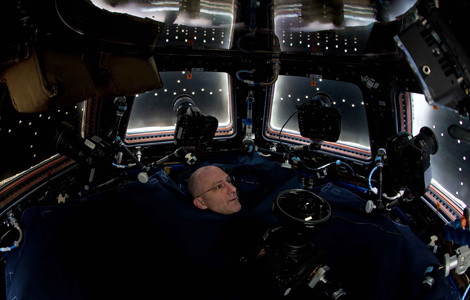Beating Stray Light
If you want good pictures in space, make it as dark as you can.
Stray light—those nasty reflections off our Space Station windows—can ruin the aesthetics of nighttime imagery and viewing. Reflected light from our numerous control panels and computer screens is hardly noticeable until you closely inspect your pictures, typically after returning to Earth when there is no possibility for a retake. The reflections are aggravated by the design of our windows: four layers of glass resulting in eight parallel mirrored surfaces. For photographers, they can create a haunting tunnel of colored blotches that project off to infinity, like being in a house of mirrors.
To eliminate these reflections requires attention to many small details. Any source of low-level light has to be masked. Even when this is done, light coming from the adjacent Node 3 and Node 1 modules is enough to ruin a nighttime sequence of images. Then there’s the toilet, close to our windowed Cupola, which, when occupied, spills sufficient rays to spoil an image. I have found that it is possible to train your crew to use it in the dark.
As a final measure, I spread a cloth baffle across the base of the Cupola with an opening sufficient only for my head. Like a flattened projection of a turtleneck sweater, this final barrier effectively excludes errant rays. Equipped this way, as soon as your eyes become adjusted for night, both your view and your images will be spectacular.
/https://tf-cmsv2-smithsonianmag-media.s3.amazonaws.com/accounts/headshot/Pettit_in_Star_City.JPG)

/https://tf-cmsv2-smithsonianmag-media.s3.amazonaws.com/accounts/headshot/Pettit_in_Star_City.JPG)